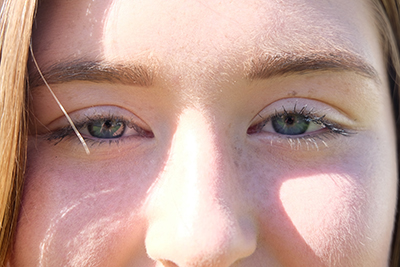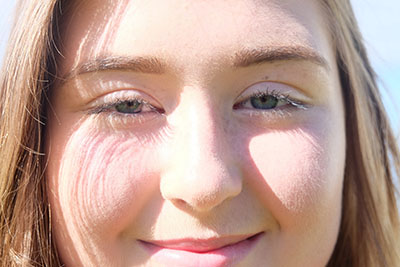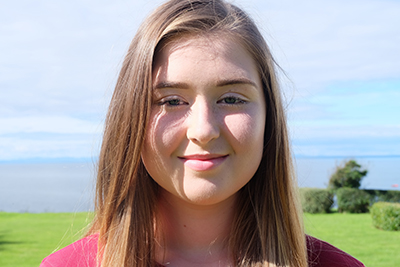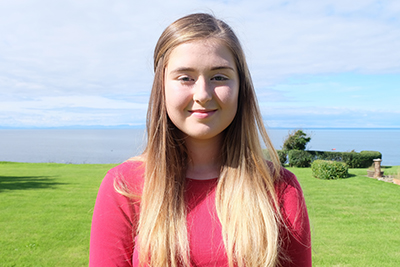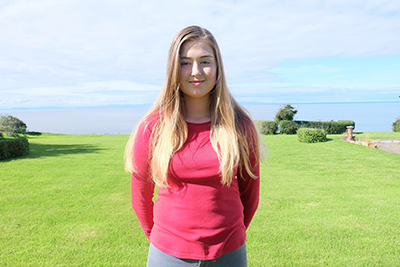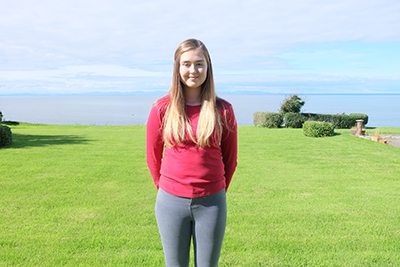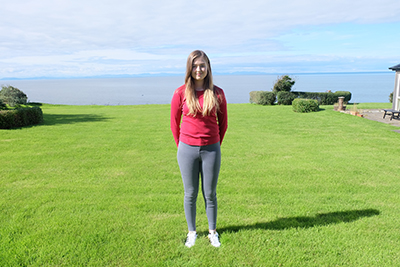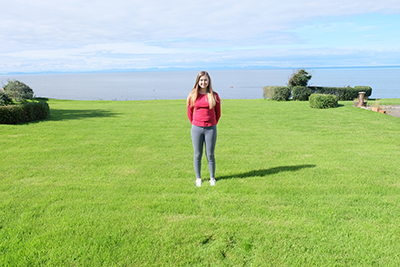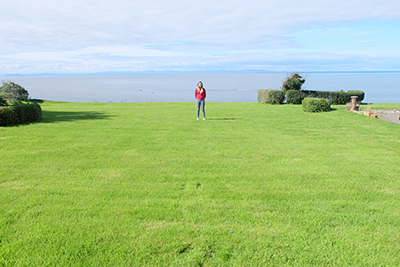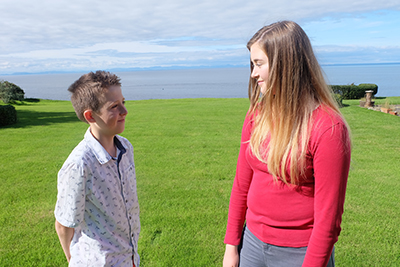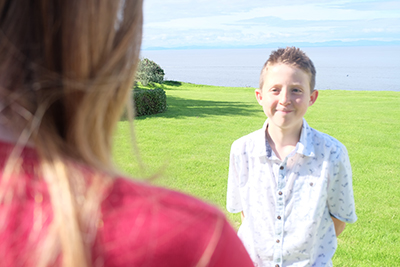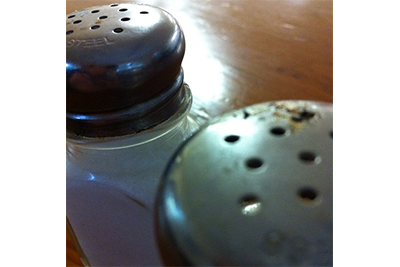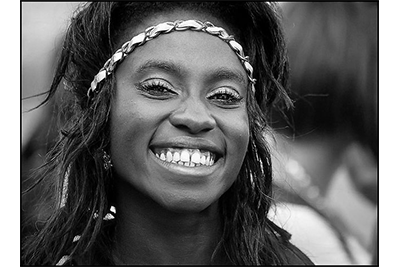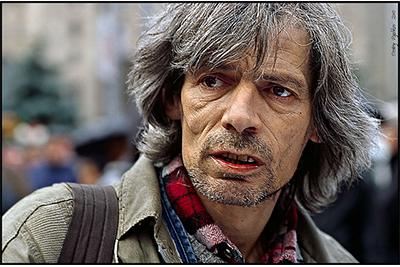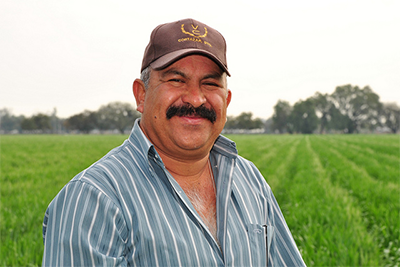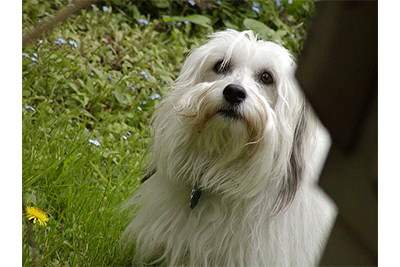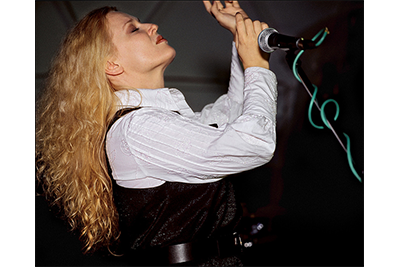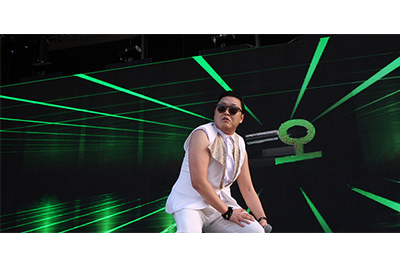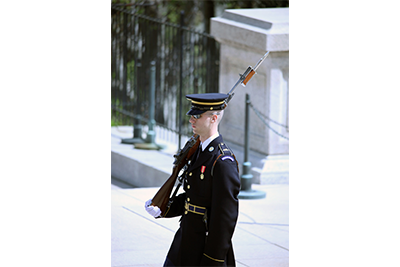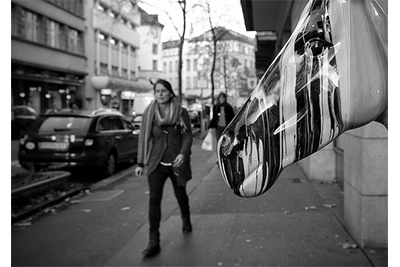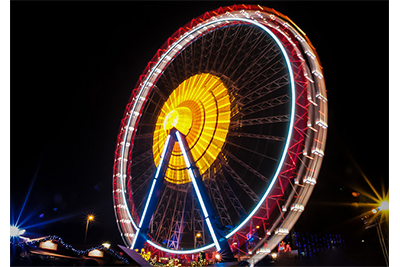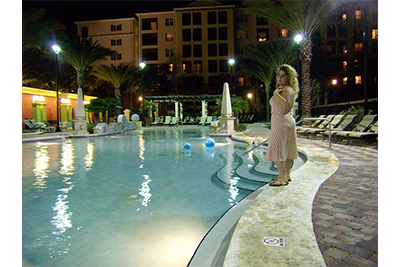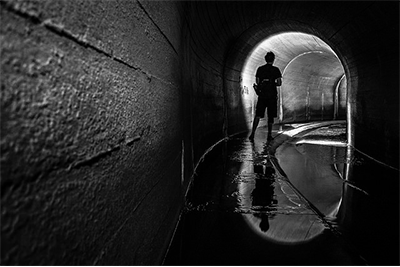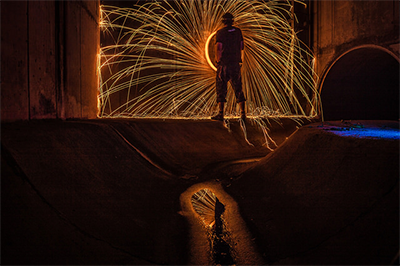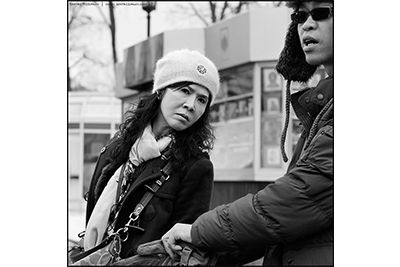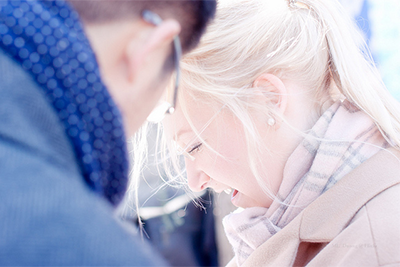Basic shot types
Images © Anna McPherson UHI
Extreme Close-Up (XCU or ECU)
- Purely a detail shot. The framing favours one aspect of a subject such as his or her eyes, mouth, ear, or hand; may be magnification of any object or item or merely just a part of an object or item.
- Lacking any points of reference to the surrounding environment, the audience has no context in which to place this body part or object detail, so understanding will stem from how or when this shot is edited into the film. It is often helpful that the subject whose body detail is displayed in the XCU is shown before or after in a wider shot so context may be established for the viewer.
- This type of extremely magnified imagery can be used in documentary work such as medical films or scientific studies, more non-fictional projects like music videos and experimental art films, or it may be included in a fictional narrative story.
Big Close-Up (BCU)
- Human face occupies as much of the frame as possible and still shows the key features of eyes, nose and mouth at once. Top frame just above eyebrows and bottom frame just below lips.
- Such an intimate shot puts the audience directly in the face of the subject. Every detail of the face is highly visible, therefore facial movements or expressions need to be subtle. Very little head movement can be tolerated before the subject moves out of frame.
- This shot is about who and how that “who” feels – angry, scared, romantic etc.
Close-Up (CU)
- Sometimes called a ‘head shot’ because the framing is primarily the face, but it may cut off the top of the subject’s hair. The bottom of frame can begin anywhere just below the chin or, more traditionally, with the neck and some upper shoulder visible.
- A very intimate full face shot of a human subject showing all detail in the eyes. It conveys the subtle emotions that play across the eyes, mouth and facial muscles of an actor. Health conditions and facial hair in men and make-up use in women are clearly visible.
- An audience should be totally focussed on the human face. An emotional connection to the on-screen subject can easily be made.
- This shot shows “who” but not so much where or when.
Medium Close-Up (MCU)
- Sometimes called a ‘two-button’ for the tight bottom frame cutting off at the chest, roughly where you would see the top two buttons on a shirt. Definitely cuts off above the elbow joint. Bottom of frame may be slightly different for men or women, depending on clothing.
- Character’s facial features are rather clear. Where the eyes look is obvious, as it emotion, hair style and colour, make-up etc. This is one of the most common shots in filmmaking because it provides much information about the character while speaking, listening, or performing an action that does not involve much body or head movement.
- An audience is supposed to be watching the human face at this point in the framing so actions or objects in the surrounding environment should hold little to no importance.
- Depending upon lighting and costuming, you may discern general information about where and when.
Medium Shot (MS)
- May also be called the ‘waist’ shot because the frame cuts off the human figure near the waist.
- Human torso is most prominent in frame. However, eyes and the direction they look, clothing and hair colour and style are all plainly visible.
- Subject movement may become a concern because the tighter framing restricts the freedom of gesture. Beware of subject breaking frame (an actor’s body part touches or moves beyond the established edge of the picture frame).
- Certainly shows ‘who’ and also provides generic detail about where (interior (INT) or exterior (EXT), house, shop, forest etc) and when (day or night, season).
Medium Long Shot (MLS) or Medium Wide Shot (MWS)
- First shot where the surrounding environment occupies significantly more screen space than the subject. Traditionally framed such that bottom of frame cuts off the leg either just below or, more commonly, just above the knee. The choice for where to frame the leg may depend on costume or body movement of the individual in the shot. If you cut bottom of frame above the knee, it is sometimes referred to as the ‘cowboy.’
- Human figure is prominent and details in clothing, gender and facial expressions are visible. Environment is clearly conveyed and understandable.
- Shows who, where and may still show when.
Long Shot / Wide Shot (LS/WS)
- This is usually considered a ‘full body’ shot, wide but still in close to the figure. Often framing feet just above bottom of frame and head just below top of frame. It may often be noted as a generic wide shot (WS) as well.
- The tall vertical line of the human figure attracts the viewer’s eye away from the surrounding environment, however, a fair amount of the character’s surroundings is visible and should be considered important to the composition.
- May work well for an establishing shot of a smaller interior location or a contained exterior area like a storefront.
- Shows where, when and who. The gender, clothing, movements and general facial expressions may be seen but real facial detail is somewhat lacking.
Very Long Shot (VLS) / Very Wide Shot (VWS)
- May be used in exterior or interior shooting when enough width and height exist within the studio set or location building.
- The human figure is visible but only generalities of race, mood, clothing and hair may be observed. The environment within the film space dominates much of the screen.
- May be used as an establishing shot.
- Shows where, when and a bit of who.
Extreme Long Shot (XLS/ELS) / Extreme Wide Shot (XWS/EWS)
- 1. Used in exterior shooting.
- A large field of view, forms an image that shows a large amount of the environment within the film space.
- Often used as an establishing shot at the beginning of a film or at the start of a new sequence. May be cut in whenever a very wide vista is required.
- Shows urban, suburban, rural, mountains, desert, ocean.
- May show day, night, summer, winter, spring, autumn, distant past, present, future etc.
- May show a stranger walking into town, or a massive invading army. Most often the human figure in the XLS are so small that details are not possible. General, not specific information will be conveyed about a character.
Two-Shot (2-Shot/2S)
- Contains two subjects who generally face toward camera (but not into the lens) or face each other and are seen in profile.
- Framing depends on whether the subjects are standing or sitting, moving or static, or making gestures and performing actions. A medium 2-shot (M2S) is common but allows for little gesturing or body movement. Medium long shot or long shot two-shots will allow more room around the subjects for movement or action.
- Framing for tighter shots (MCU, CU) would entail extremely close proximity of subjects’ heads, implying intimate connectivity or aggressive posturing like two boxers in a clutch. To see both faces of the subjects in a very tight 2-shot, you would have to ‘favour’ one body before the other, literally overlapping the people within the frame. The person closest to camera and seen fully by the viewer is given favour. No overlapping is required if seen in CU 2-Shot profile, as in a kissing shot, slow dance, or boxers before the match.
- Adding another actor creates a three-shot (2-shot), a group shot, or a crowd shot, depending on how many individuals are clustered together in the frame. The framing would be wider for the extra people who are added to the composition.
Over-The-Shoulder (OTS)
- A special 2-shot in which one subject is ‘favoured’ by facing camera (either frame left or frame right) and the other subject has his or her back turned toward camera on the opposite side of the frame. The non-favoured subject creates an ‘L’ shape at the edge of the bottom of frame with the back of her/his head and shoulder. The camera shoots over one subject’s shoulder to frame up the face of the other subject.
- Due to the ‘shoulder’ subject partially cut off at the edge of frame, the shot type used for the OTS may be as tight as a medium close-up – or maybe a full close-up. Anything closer and the composition would alter the balance of the frame and the shoulder may get lost.
- It is often helpful to have a decreased depth of field so the portion of the ‘shoulder’ subject visible in the corner of the frame is blurry while the face of the favoured subject is well focussed. Having a well-focused back-of-the-head may prove to be distracting for the audience. Editing software Matte and Blur effects can help with this if needed.

All efforts have been made to ensure materials created by the EDU comply with current accessibility guidelines (JISC: Support for learners with disabilities).
If further assistance is required with accessibility matters please contact the student support section in your academic partner UHI: Accessing learner support.
We welcome any comments on how to improve this unit. Please feel free to pass these on at any time.
If you have any difficulty viewing this resource please contact EDU (edu@uhi.ac.uk) with:
- the name of the resource;
- a description of the problem (please give as much detail as possible);
- the section of the resource where the problem occurred;
- your internet browser (you can check your browser version at: http://detectmybrowser.com/).
UHI provides links to external sources of information and may refer to specific Web sites, products, processes or services within this resource. Such references are examples and are not endorsements and whilst every effort is taken to ensure the accuracy of information provided UHI is not responsible for any of the content or guidance. You are advised to exercise caution.
Audio
Video
Reading
Download
Information
External link
Activity
Question
Asterisk
Discussion
Collaboration
Reflection/journal/log
History
Download a copy of this resource in PDF format.
You can also print individual pages by printing directly from the browser.
